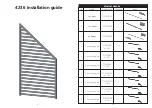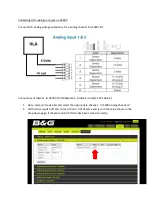
51
Analysis and Troubleshooting
Molecular Weight Calibration
Molecular Weight
Calibration
The molecular weight of a protein can be determined based upon its relative
mobility by constructing a standard curve with protein standards of known
molecular weights.
The protein mobility in SDS gels is dependent on:
•
Length of the protein in its fully denatured state
•
Secondary structure of the protein
•
Buffer system used
An identical molecular weight standard may have slightly different mobility
resulting in different apparent molecular weight when run in different gel
buffer systems.
If you are using molecular weight standards from Life Technologies, see the
apparent molecular weights of these standards on E-PAGE
™
Gels listed under
Assigned Apparent Molecular Weights
to determine the apparent molecular
weight of your protein.
You may need to generate calibration curves in your lab with any other
manufacturer’s standards.
Assigned
Apparent
Molecular Weights
The apparent molecular weight values shown below are derived from the
construction of a calibration curve in the E-PAGE
™
48
and
96
buffer systems.
Use the values listed in this section for the most accurate calibration of your
protein on an E-PAGE
Gel.
SeeBlue
®
Plus2 Pre-stained Standard
Molecular Weight on E-PAGE
™
48
8% Gel
1
2
3
4
5
6
7
8
1.
Myosin (215 kDa)
2.
Phosphorylase (146 kDa)
3.
BSA (78 kDa)
4.
Glutamic Dehydrogenase (56 kDa)
5.
Alcohol Dehydrogenase (39 kDa)
6.
Carbonic Anhydrase (25 kDa)
7.
Myoglobin Red (19 kDa)
8.
Lysozyme (16 kDa)
Содержание E-PAGE Gels
Страница 77: ...73...
















































